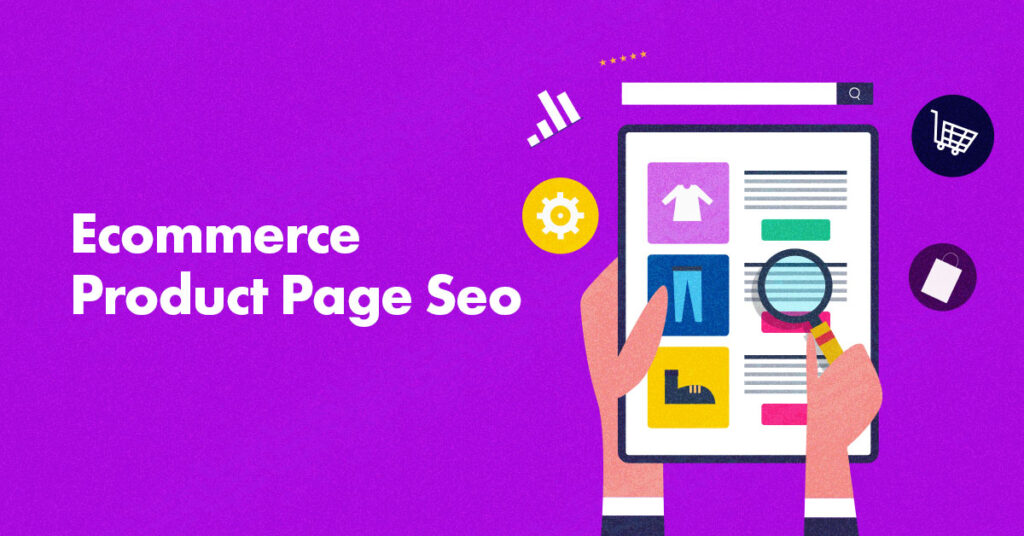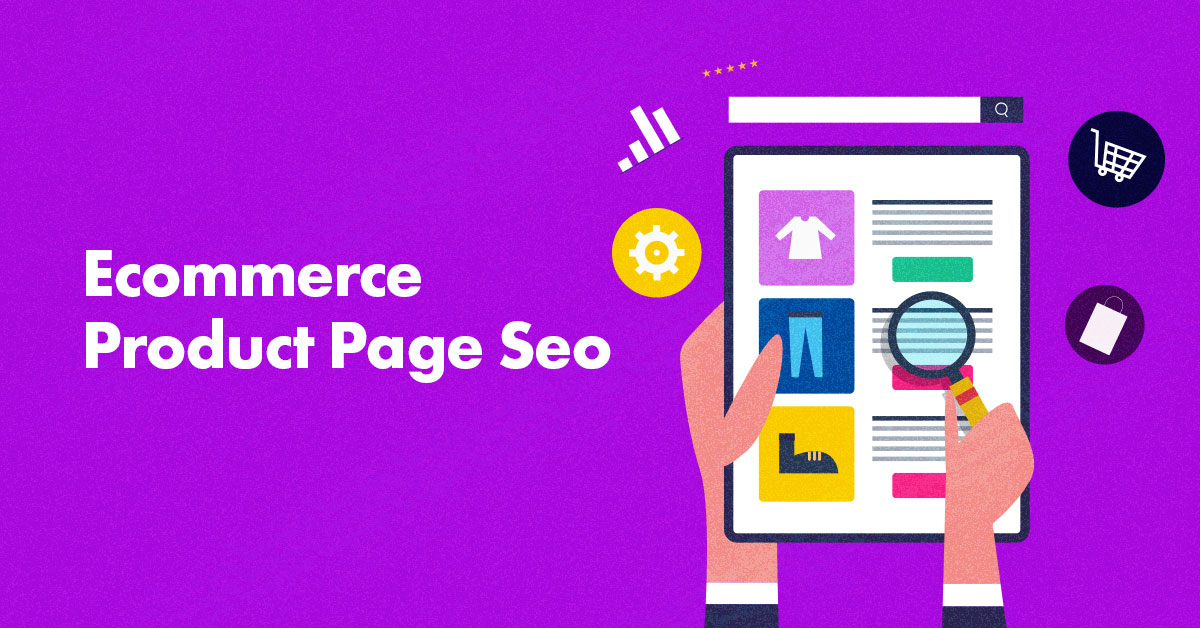Relevant keyword ranking is critical for business success. Obtaining the top slot places your shop in front of a larger, high-intent audience, allowing you to generate more sales.
However, eCommerce SEO is a difficult discipline to master. It entails using multiple eCommerce marketing tools, doing frequent eCommerce content optimization, staying up to speed with Google changes, and collaborating with an eCommerce optimization business, among other things. Where Can E-commerce Content Be Found on Google? Google Glass, Google Shopping, Google Images, Google Maps, and Google My Business.
When performing eCommerce content optimization, keep in mind that these providers support a variety of content presentation options. Make the most of each by collaborating with eCommerce SEO services to create customized content such as your company’s story, customer product evaluations, and catalogs.
Sharing Product Information with Google
Any e-commerce SEO agency would agree that inputting product data aids in optimizing the performance of an eCommerce website for search. It helps search engines display relevant product information to clients with high intent.
Google’s recently issued recommendations include suggestions for e-commerce websites on properly sharing product data with the search engine. It advises site owners to:
- Add a feed to Google Merchant Center: This enables Google to understand your products and determine what to display for relevant search queries.
- Add structured data to product pages: This boosts your chances of appearing in product-rich results and improves Google’s comprehension of your content.
There are eight different types of structured data in e-commerce.

Structured data is the coding that tells search engines how to read and display your website’s information. Structured data isn’t unique to eCommerce, but these eight categories are:
- BreadcrumbList: Helps Google determine where a page is in the site structure.
- WebSite: Assists Google in understanding how your site uses site search and qualifies your eCommerce site to appear in search results with a search box.
- HowTo: Assists Google in understanding your “how-to” tutorials and displaying them as rich result in relevant search results.
- Product: Tell Google about your product.
- LocalBusiness: Assists Google in understanding your location, business hours, and other information on your company’s information pages.
- Review: This assists Google in understanding your website’s product reviews.
- Video object: This object assists Google in displaying your pre-recorded films or live-streamed events in relevant search results.
- FAQPage: This helps Google crawl and index your FAQ pages while also displaying a rich result for its questions and answers.
You may incorporate these structured data types throughout your pages by working with a technical SEO agency or a technical SEO consultant. This allows you to do eCommerce content optimisation successfully and appeal to various audiences, regardless of their purchasing stage.
Related: Search Engine Optimization
eCommerce SEO Guides for Starting a New Website

A well-designed and functional website is not enough to ensure a successful launch. Make sure your new eCommerce site performs effectively on search engines while you engage with your eCommerce marketing firm. Google gave the eCommerce website suggestions below, which you should include in your eCommerce SEO checklist:
- Check your website’s property.
- Request that Google crawl your website.
- The Index Coverage report can be used to see how Google Search indexes your site.
- If you have a physical store, use Google Business Profile to declare or create a new local business (formerly known as Google My Business).
- Sign up for Google Merchant Center to submit information about your company, product descriptions, and discounts.
- Creating the URL Structure for Your eCommerce Site
If you’re using an eCommerce platform like Shopify, your site’s URL structure may not need to be included in your eCommerce SEO checklist. Most platforms already take care of this for site owners.
If you’re starting from scratch, you’ll need to collaborate with a technical SEO professional to govern your URL structure. This allows you to prevent indexing troubles while also assisting Google in rapidly locating and retrieving your web pages.
The following approaches are recommended by Google’s e-commerce development reference guide:
- Reduce the number of URLs that provide the same information to avoid Google making unnecessary queries to your site.
- Use the same letter case for all text in a URL if the web server handles upper- and lower-case text the same way.
- Each page in paginated results should have its own URL.
- Use descriptive terms in URL routes to help Google understand your site.
A skilled technical SEO specialist should be able to keep your site in line with these guidelines. Assisting Google in Understanding the Structure of Your eCommerce Site
A critical element to include in your eCommerce SEO checklist is that Google evaluates the relationship between your pages based on their links to choose the best content on your site. Site navigation architecture like menus and cross-page links can have an impact on how Google accomplishes this.
Google recommends the following steps to improve your eCommerce site’s navigation and make it crawler-friendly:
- Ensure your pages may be visited by following links through your site’s navigation.
- Include structured data to help Google understand the roles that different pages on your site play.
- Include links to the product pages you want indexed; Google’s crawlers may miss products if category pages lack direct links to them.
- Make as many links to your best-selling items as possible to demonstrate to Google how important these sites are.
There’s also the option of hiring SEO services for eCommerce websites, which is especially useful if you’re unfamiliar with site structure optimisation. Seeking experienced aid allows you to complete the task swiftly and efficiently.
UX Patterns and Their Influence on Page Performance
According to Google, you may improve your site’s user experience by presenting a subset of results to improve page speed. For example, you may show a subset of accessible goods in response to a user using your eCommerce site’s search box. “
Google lists three UX patterns for progressively loading results on eCommerce sites:
1. Pagination: A UX design that divides material into individual pages and allows users to browse between them by clicking buttons such as “Next,” “Previous,” and page numbers.
2. Load Additional: A user experience pattern that allows users to view more results by clicking a button.
3. Infinite Scroll: A user experience paradigm in which content is continuously loaded as users scroll downwards.
Consider these elements and how they may affect user experience to determine the best solution for your eCommerce website. You may also seek expert guidance from your eCommerce optimisation agency or technical SEO specialist.
With the help of a cutting-edge SEO agency, you can propel your company to success
Navigating eCommerce SEO might be difficult, but there are easily available tools, such as Google’s eCommerce development reference book, to help you plan your approach. The search engine behemoth has issued eCommerce website guidelines for increasing your site’s exposure throughout its numerous services. You should use these resources to enhance your eCommerce SEO auditing, site optimisation, and marketing.
You can completely optimise your eCommerce website content and conduct your own eCommerce SEO audit. However, partnering with an SEO company like P1 SEO agency may help you increase efficiency and avoid the trial-and-error stage.
P1 SEO agency, a digital optimisation firm, offers result-oriented eCommerce SEO services. Our SEO services strategies are customised methods, and we are committed to remaining up to speed with Google’s upgrades. Furthermore, we employ cutting-edge marketing technologies and remain up to date on Shopify SEO and Amazon SEO best practises to meet any needs you may have.
We can’t wait to take your company to new heights!




